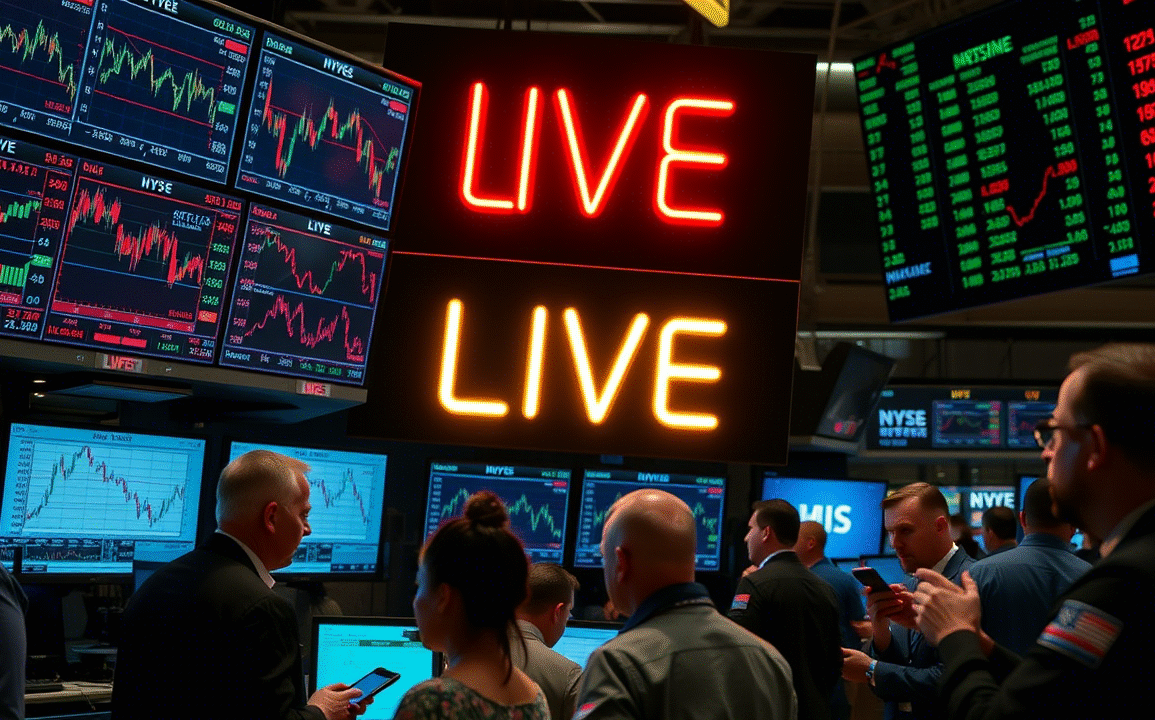A Week of Whiplash: Trade Policy Fuels Market Swings
End-May 2025 was indeed very exciting for markets, with investors reacting in different ways to U.S. trade policy from apparently contradictory effects. On May 29, with the U.S. Court of International Trade generating a landmark ruling that nullified key Trump-era tariffs, the world markets scaled new heights in the euphoria of a possible cessation of trade tensions. Almost 24 hours later, on May 30, the federal court of appeals reinstated those tariffs, and the consequent shock ran through financial markets across the world.
As these legal permutations continued, more policy-driven volatility appeared to be created—and continuing innovations in tech stood resilient against increasing geopolitical winds.
From Relief to Uncertainty Tariffs Chaos
On May 29, the U.S. trade court had ruled that President Trump had exceeded his powers under the IEEPA when imposing a sweeping set of tariffs consisting of law enforcement matters:
- A 10% baseline levy
- Reciprocal duties on dozens of nations
- 20–25% levies on imports from China, Canada, and Mexico related to fentanyl and steel disputes
This decision was considered an excellent victory for free trade advocates, sending futures sharply upward:
- S&P 500 futures: +1.5%
- Nasdaq 100 futures: +1.8%
- Dow Jones Industrial Average (DJIA) futures: +1.2%
This was quickly followed by Asian and European markets:
- Nikkei 225: +1.9%
- Kospi: +1.9%
- Germany’s DAX: +0.5%
But then the fountains were arrested.
May 30 saw a federal appellate court reinstating the tariffs pending the conclusion of the litigation on grounds of national security and the continuing economic leverage. Futures reversed course to mixed slight negatives. Asian markets took a bend lower, and European indices followed suit.
Stephen Innes, SPI Asset Management: “A brief respite before the next thunderclap.”
Capital Economics: “Should the appeal fail, inflationary pressure may ease-but that is only the case if no new tariffs are ushered in.”
Nvidia Earnings Fuel Tech Optimism Amid Policy Headwinds
Though trade policy stole the headlines, NVIDIA’s Q4 earnings provided some sort of silver lining. The AI chipmaker surpassed expectations with robust bookings of its H100 GPUs for performance:
- Premarket: +6%
Ironically, such was the case despite CEO Jensen Huang’s warning of an $8 billion sales hit due to U.S. export bans on the China-bound H20 chips.
Huang says, “China’s AI moves on with or without U.S. chips.”
Wall Street believes in long-term AI growth as evidenced by AMD stock also rising in the aftermath.
Market Winners and Losers: Retail Pain vs. Tech Gains
Despite early rallies of the indices, individual stocks painted a more complicated picture:
Tech & Artificial Intelligence Winners:
- Nvidia: +6% Premarket
- AMD: Gains in tandem with Nvidia
Retail & Industries Losers:
- GameStop—11% (after disclosing its 4,710 Bitcoins investment)
- HP—15% (tariff-induced earnings miss)
- SunTrust Banks: –33.87%
- Frontier Communications: –26.18%
- American Eagle Outfitters: –5.1%
Retail Resilience:
- Abercrombie & Fitch: +14.67%
- Ulta Beauty: +14.5%
Meanwhile, Gap Inc. warned how tariffs might force $300 million in extra costs this fiscal year, thereby highlighting the fact that U.S. companies—not solely foreign exporters—are feeling the pain.
Global Markets Reflect Interconnectedness
The ripples were felt on both sides of the global continent:
India:
- Sensex: +0.39% at 81,633
- Wockhardt: +11%
- Suzlon Energy: +365% YoY profits
- Ola Electric: Losses doubled
Europe:
- +0.9% for France’s CAC 40
- Further Kospi gains on Bank of Korea rate cut
Economic Crosscurrents: Growth Fears and Fed Patience
- U.S. GDP (Q1 2025): -0.3% (first contraction in three years)
- Inflation: Sticky at 2.4%
- Apparel prices: +17% YoY
- Fed policy: Hold rates steady at 5.25%-5.50%
India’s Central Bank:
- Balance sheet growth: +8.2% in FY25
- Digital rupee circulation: ₹1,000 crore ($120M)
Navigating Volatility: Expert Takeaways
Goldman Sachs: Recommends diversification amid correlated stock-bond moves
Stephen Innes: “Trade wars aren’t over. They’re just paused.”
Yale Economists: Estimate tariffs could:
- Cut real GDP growth by 0.9% in 2025
- Lose output worth $180 billion/year
Jensen Huang: “The question is whether one of the world’s largest AI markets will run on American platforms.”
(Hinting at a tech cold war with deep implications.)
Conclusion: Policy Is the New Volatility Engine
The May 29–30 whiplash showed a combined movement with markets for legal rulings and corporate earnings.
Dow Jones (closing for May):
- +4.07% monthly
- +10.34% YoY
- Still 5.29% below its 52-week high
In today’s market, agility is key. Between shifting trade policies, Fed actions, and tech innovation, volatility is now a feature—not a bug.
Stephen Innes: “The game has changed. Policy is the new volatility engine.”
In 2025, the winning strategy isn’t just about watching charts—it’s about watching courtrooms.
This article was originally published on InvestingCube.com. Republishing without permission is prohibited.


